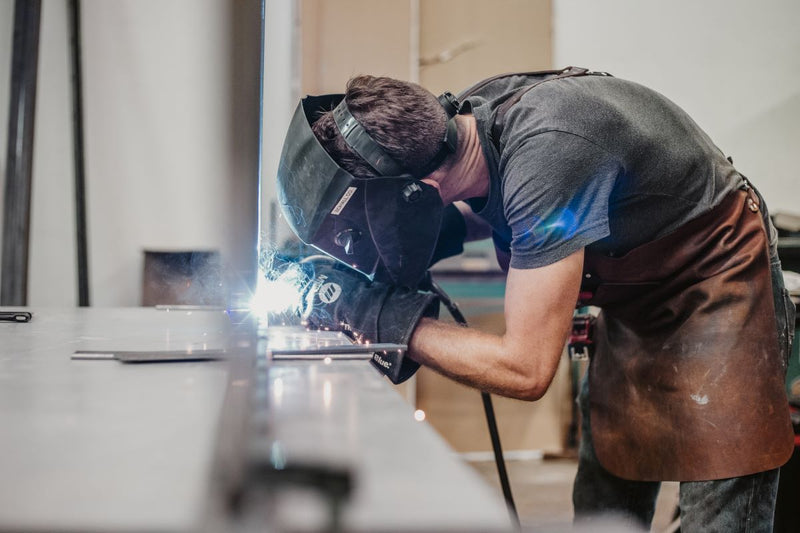Understanding the Art of Welding: Exactly How to Stay Clear Of Undercut Welding Issues for Flawless Fabrication Outcomes
By recognizing the root causes of undercut welding and implementing efficient strategies to prevent it, welders can raise their craft to new degrees of excellence. In the quest of perfect fabrication results, understanding the art of welding to avoid undercut issues is not simply a skill but a requirement for those making every effort for excellence in their work.
Comprehending Undercut Welding

To stop undercut welding, welders need to make sure appropriate welding parameters, such as readjusting the existing, voltage, travel speed, and preserving the correct electrode angle. Additionally, using the appropriate welding technique for the certain joint arrangement is vital. Employing weaving motions or backstepping methods can aid ensure proper weld metal deposition and decrease the probability of undercut development. Routine examination of welds throughout and after the welding process is likewise critical to catch any kind of undercut early and make required modifications to avoid more flaws. Preventing weld undercut. By understanding the reasons of undercut welding and applying safety nets, welders can accomplish high-grade, structurally sound welds.
Sources Of Undercut in Welding
Understanding the factors that contribute to undercut in welding is important for welders to generate high-grade, structurally audio welds. Poor welding inaccurate or existing welding rate can likewise contribute to damage. Comprehending these causes and applying appropriate welding methods can aid prevent damaging concerns, guaranteeing resilient and strong welds.
Methods to avoid Undercutting

To minimize the threat of undercutting in welding, welders can employ tactical welding methods aimed at improving the quality and stability of the weld joints. One effective approach is to adjust the welding criteria, such as voltage, current, and travel rate, to make sure correct warmth input and deposition. Preserving an appropriate electrode angle and ensuring constant travel rate can additionally aid protect against undercut. Furthermore, making use of the right welding method for the specific joint setup, such as weave or stringer grains, can contribute to minimizing damaging. Preventing weld undercut.
Additionally, proper joint preparation, consisting of guaranteeing tidy base products totally free of impurities and utilizing the ideal welding consumables, is crucial in preventing undercut flaws. Utilizing back-step welding methods and managing the weld grain account can also help distribute heat evenly and reduce the danger of undercut. Normal assessment of the weld joint throughout and after welding, in addition to carrying out top quality guarantee measures, can assist in discovering and resolving damaging concerns Click Here without delay. By executing these strategies faithfully, welders can achieve perfect manufacture results with very little undercut flaws.
Value of Correct Welding Criteria
Choosing and maintaining appropriate welding criteria is vital for accomplishing successful welds with very little flaws. Welding criteria describe variables such as voltage, existing, travel rate, electrode angle, and securing gas circulation rate that straight influence the welding process. These parameters must be carefully changed based on the kind of material being bonded, its thickness, and the welding strategy employed.
Proper welding parameters make sure the correct amount of warmth is applied to melt the base steels and filler product evenly. If the specifications are established also high, it can lead to too much warm input, causing distortion, spatter, or burn-through. On the various other hand, if the specifications are too low, incomplete blend, absence of infiltration, or damaging may happen.
Top Quality Assurance in Welding Operations

Verdict
To conclude, understanding the art of welding needs a complete understanding of undercut welding, its causes, and techniques to stop it. By making certain proper welding criteria and carrying out quality control practices, remarkable manufacture outcomes can be accomplished. It is vital for welders to consistently make every effort for quality in their welding operations to prevent undercut concerns and generate high-grade welds.
Undercut welding, a typical defect in welding procedures, occurs when the weld metal does not appropriately fill the groove and leaves a groove or anxiety along the welded joint.To protect against undercut welding, welders should make sure correct welding parameters, such as changing the current, voltage, traveling rate, and maintaining the appropriate electrode angle. Insufficient welding inaccurate or existing welding speed can additionally add to damage.To reduce the risk of undercutting in welding, welders can use strategic welding strategies intended at improving the quality and integrity of the weld joints.In conclusion, mastering the art of welding calls for a thorough understanding of undercut welding, its reasons, and strategies to stop it.